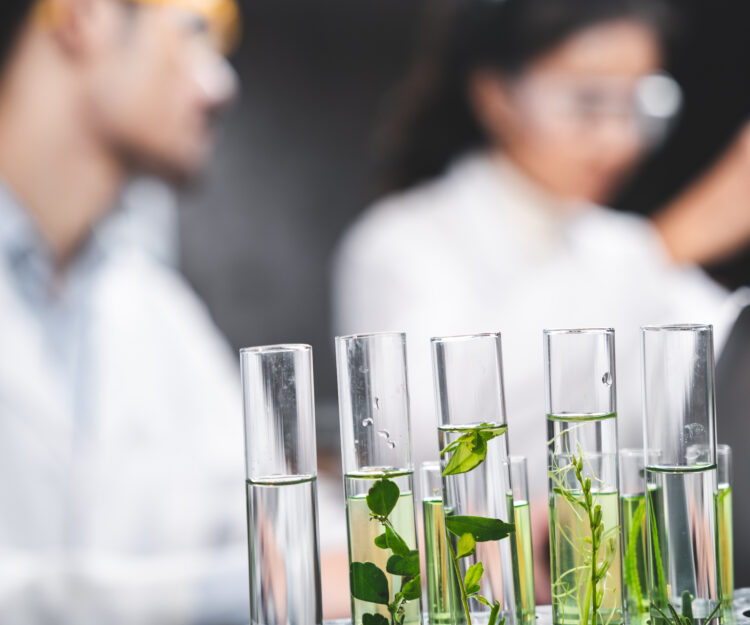So you have an idea for a new product formulation. Maybe it’s your own, or maybe you want to replicate and improve upon an in-market product. How do you get from idea to execution?
Health and wellness product formulation can be pretty opaque, especially if you’re outsourcing to a white-label manufacturing partner. That’s why we want to pull back the curtain and show you how these product formulations actually get made.
Why should you care about product formulation?
First off, why should you even care about this? If the product gets made and does what it claims, shouldn’t you just let the experts do their work and stay the heck out of the way?
Well, if you could actually trust the experts, I’d say yes. But here’s the problem: most of the so-called experts are anything but.
What’s more, most white-label manufacturers aren’t primarily interested in making the best product out there. Rather, they want to maximize their own bottom line.
Since they aren’t customer-facing, they don’t have to worry about upsetting the market. So instead of putting the customers and their needs front and center, instead they cut corners—going as cheap as possible to make as much profit as possible.
Here are some examples of what I mean:
- ● Not vetting their suppliers for ingredient efficacy
- ● Massaging the definition of “green” or “natural” to meet their needs
- ● Sneaking dangerous chemicals into the products, like formaldehyde, because they’re desperate for the products to last the longest
Of course, no one’s going to come out and say “our product cuts corners and lies about its ‘green’ claims.” Which means that as you vet a manufacturing partner, you’ve got to dig a little deeper.
What key factors go into product formulation?
There are a lot of good reasons to source chemical ingredients internationally. Like it or not, there are a lot of substances that a) can’t be produced at scale domestically, or b) require knowledge domestic producers just don’t have.
But with international ingredient sourcing comes some risk. One major risk: lack of regulation surrounding production, labor, sustainability, etc.
(And, let’s be real, a lot of products deemed “safe” here in the U.S. are anything but.)
There’s a balancing act between finding the most profitable supplier and making sure you comply with any environmental or toxin-related concerns. This means you need to be very aware of where your products are coming from, all the way down the supply chain to the farm or plantation where they originate.
While there are countless factors that influence product formulation, here are five that, in our experience, are the most impactful. These should always be top of mind when considering:
- ● What types of products will be most profitable?
- ● Does our manufacturing partner have the expertise to create natural, safe formulations?
- ● How do we evaluate products before, during, and after production?
- 1. Ingredient concentration
A key aspect of product formulation is efficacy: does the product do what it says on the tin? And the #1 factor that influences efficacy is ingredient concentration.
Too often, suppliers will put 0.001% of a given ingredient into the product just so they can make a label claim. That’s why you need verified audits of your products to ensure your manufacturing partner concentrates a particular ingredient to the point where it achieves the desired result.
If a manufacturing partner is unable or unwilling to provide an audit of their formulation or ingredient concentration levels, they likely won’t be a good partner for you.
- 2. Real environmental protection & sustainability
“Green” is, unfortunately, in the eye of the beholder. There are so many different standards out there to determine what constitutes a “green” product—and some of them even contradict each other.
For instance, “green” could mean that it meets the Environmental Protection Agency’s (EPA) definition of being Designed for the Environment (DFE). Alternatively, the Natural Products Association or the USDA could define “green” as sourced from renewable resources.
But you can easily imagine a petroleum-based biodegradable chemical. So it’s DFE, but not derived from a renewable source. Alternatively, you could have renewable sources that are toxic to the environment.
As such, it’s important to define “green” and ensure that your manufacturing partner is living up to those concrete standards. Otherwise, you run the risk of greenwashing, which can hurt your brand reputation down the line.
- 3. Customer experience
People don’t just want products that get the job done. They want products that they enjoy using. Experience is just as important as effectiveness.
Unfortunately, too many manufacturers cut corners when trying to achieve desired results. For instance, many of the chemicals used in generating fragrances are a source of allergens that can impact user health and wellness. (Ironic, isn’t it?)
When formulating your product, it’s important to find natural, safe ways to achieve the desired experience. One way we do this at Alkuhme is by using plant-based surfactants in our standard laundry detergent. These prevent bacteria from growing, while also avoiding highly corrosive substances like sodium hydroxide.
- 4. Residual chemical byproducts
Often the dangerous chemicals in a product aren’t intentionally placed into the product by the manufacturer. Rather, they’re the result of chemical reactions that occur once the product is in use. Dioxins are an obvious example of this.
So it’s not just enough to know what’s going into the product. You also need to have enough chemistry expertise to know what could happen to the product over time. Because you’re responsible for residual chemical byproducts and the consequences they cause for customers.
- 5. Supply chains
There are a lot of good reasons to source chemical ingredients internationally. Like it or not, there are a lot of substances that a) can’t be produced at scale domestically, or b) require knowledge domestic producers just don’t have.
But with international ingredient sourcing comes some risk. One major risk: lack of regulation surrounding production, labor, sustainability, etc.
(And, let’s be real, a lot of products deemed “safe” here in the U.S. are anything but.)
There’s a balancing act between finding the most profitable supplier and making sure you comply with any environmental or toxin-related concerns. This means you need to be very aware of where your products are coming from, all the way down the supply chain to the farm or plantation where they originate.
Today’s new frontier in product formulation
In the past, manufacturers had a wide open toolbox. They could build whatever products they could, as long as it worked and was cheap. While this was certainly convenient for manufacturers and brands, unintended consequences led to problems for consumers.
Then there was a period where there was high regulation. While products became safer, manufacturers found it difficult to find safe, reliable, and profitable alternatives to traditional formulations.
Today, however, we’re on the cusp of what I would consider a Golden Age in product formulation. Now, plant- and mineral-based products are both accessible and affordable in quantities we haven’t seen before.
In other words, there’s never been a better time to build a health and wellness product that’s safe, sustainable, and profitable all at once.
Looking for a manufacturing partner who excels at all the factors listed above? Get in touch with Alkuhme and let’s see how we can help.








